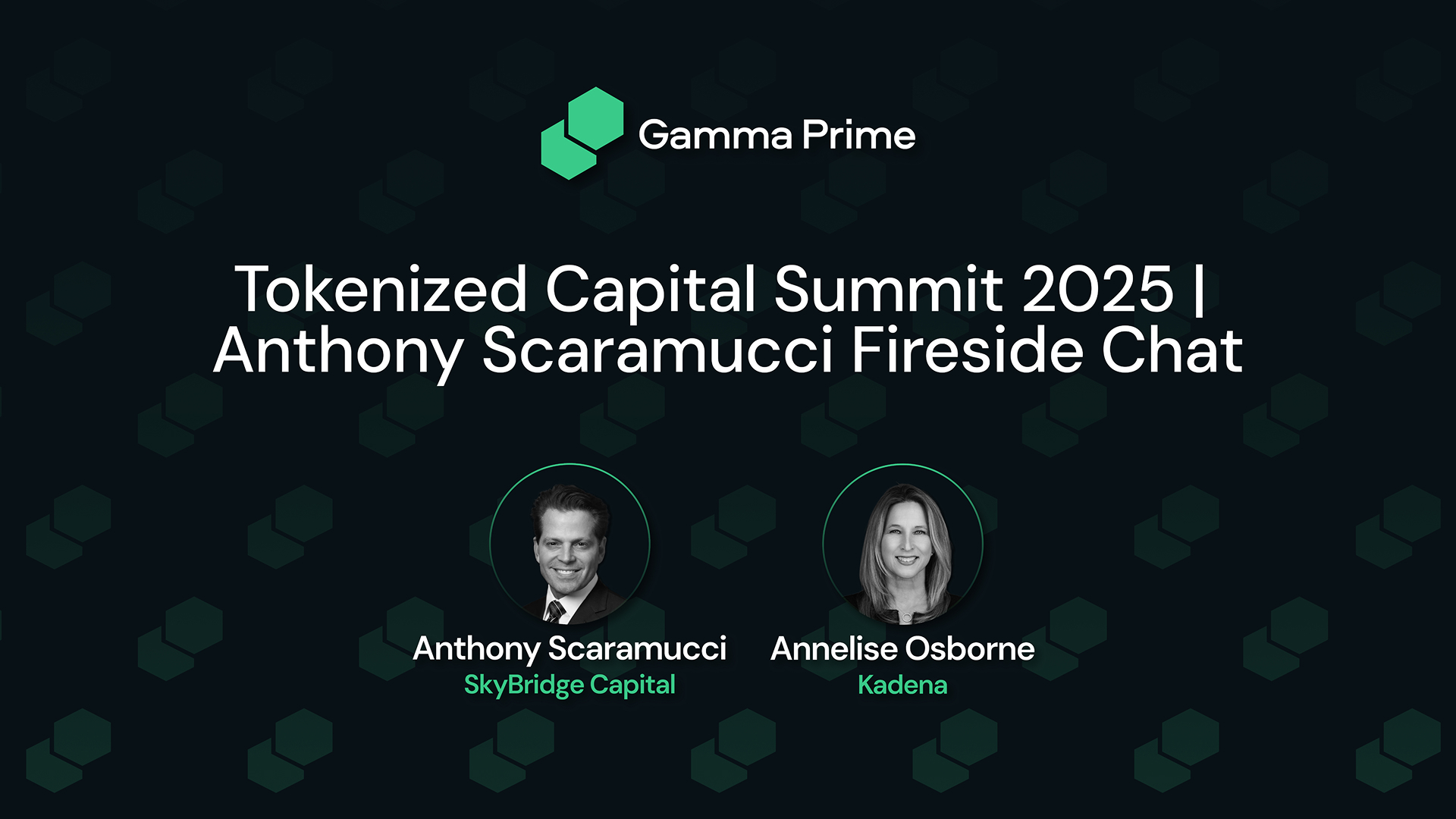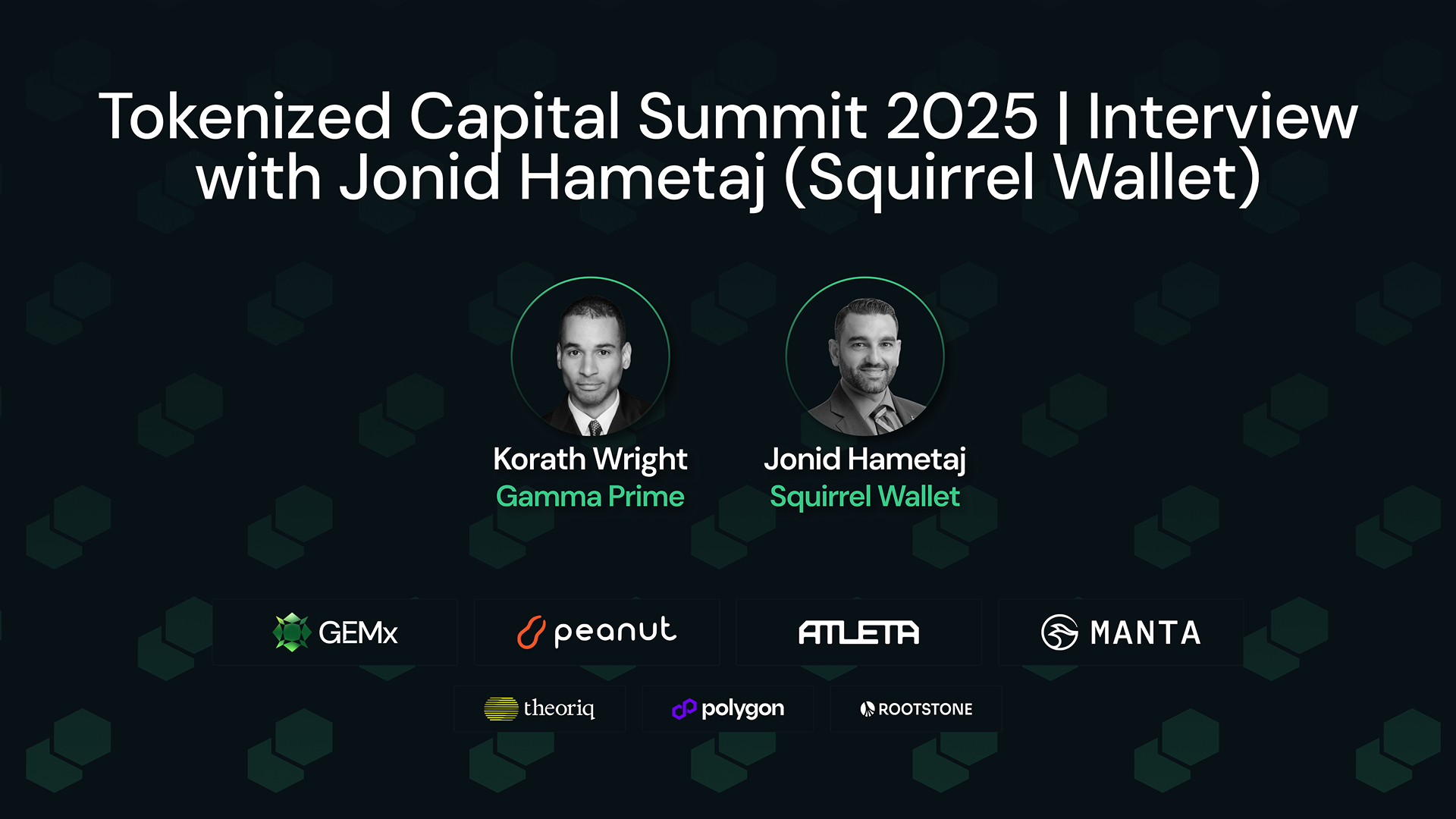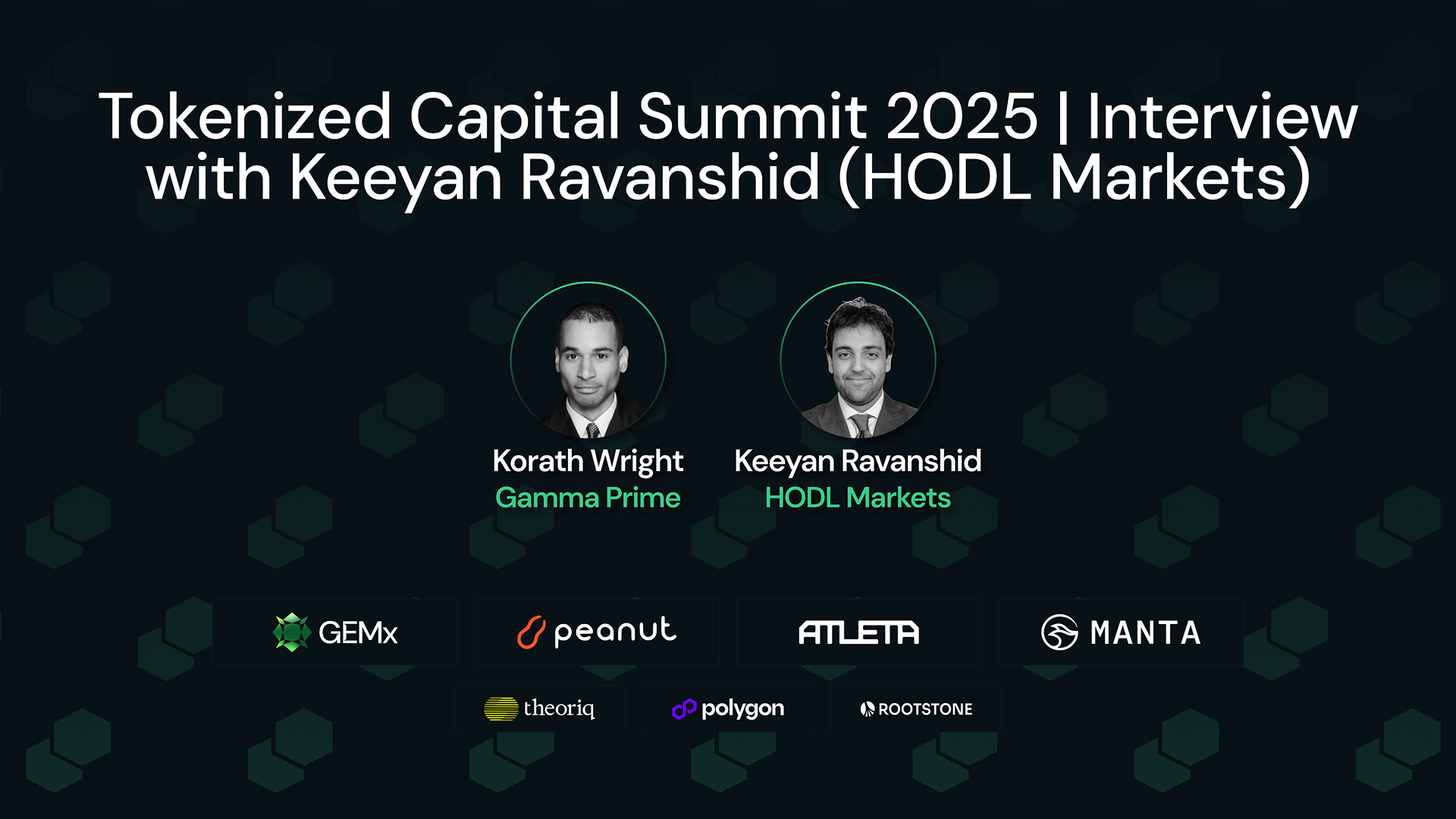Watch the video of this part of the panel discussion on Gamma Prime’s YouTube channel:
Panel discussion with Sebastien Borget (Co-Founder and Global Ambassador at The Sandbox), Alex Esin (CEO at P2P.org), Kenneth Shek (Head of Projects at Animoca Brands), Evan Szu (Co-Founder and CEO at Gamma Prime), and Eric Benz (Founding Partner & Managing Director at MYNT)
Why is it still so hard for traditional finance to merge with DeFi? Hear from industry leaders as they break down regulation gaps, UX challenges, and the real reasons behind slow adoption in this episode of the panel discussion.
Eric Benz (MYNT)
Thank you, everyone, for being here today.
Now, just getting back to the topic, I wanted to bring up: what’s the biggest friction point between TradFi and DeFi? I mean, this is a very basic question, but also, I think, a very important answer.
Sebastien, do you want to start?
Sebastien Borget (The Sandbox)
I cannot maybe speak too generally about the topic, but I want to apply a little bit of knowledge and experience I’ve acquired in video games.
Typically, gamers, I believe, have been intuitively – or maybe without knowing – some of the best people in the world that tend to make arbitrage and take decisions to optimize always for the best outcome.
Whenever we decide to make a purchase in a game, we buy currency, or we choose to spend the hard-earned experience points to upgrade the different characters, avatars, etc., we will always optimize for the best outcome that will deliver for us the best return afterwards—to collect more resources, and so on.
I do believe that gaming has been one of the best ways not only to bring adoption to our blockchain, but to bring more understanding about financial literacy into the world of blockchain, and kind of bridge a lot of users who are not DJs, who are not traders, to actually learn and become actual traders, but using all the benefits that DeFi has to offer through decentralized exchange and the quick access to crypto.
Yet, a whole bunch of the media and the industry still think the UX is difficult, the onboarding is difficult in general, because they want to bring even more users. But I do think, obviously, in the disguise of a very simple entertainment product, we’ve already been able to push more people to actually become traders without necessarily knowing about it.
When you see a lot of the games from the early Axie Infinity and what they pushed with Play2Earn, or now we’re seeing new games like the MapleStory universe, Craftworld, or NFL Revolve, those games are actually making people trade more and more game items, collectibles, or tokens, towards generating more outcome and more revenue for the players.
The game field is much bigger thanks to the use of the technology here and the use of DeFi.
So, that’s my take on the topic.
Alex Esin (P2P.org)
I think the short answer first is regulatory. We still have a lack of clear understanding of the rules for some specific regions. In some cases, it’s just moving forward in the dark room.
The second, I think, is we speak a lot about KYP, KYC, but right now the issue is about the KYP – know your protocol. Right now, we have a lack of a common standard system to measure some risk of protocols. And every time, it’s a new game.
And right now, between both, there’s regulation and assessment of different protocols. As a result, there’s friction between TradFi and DeFi from my point of view.
Kenneth Shek (Animoca Brands)
Yeah, I think there are four main angles.
One is the user experience, more on the key management side of things.
Second is liquidity, in terms of DeFi side and CeFi side. If it’s TradFi, how do you bridge that liquidity? We see the likes of Coinbase already tapping into that, basically having centralized exchange liquidity flowing into on-chain DEXs.
Third is regulation, which digital identity plays a big role in. That’s what we’re building—how do you balance decentralization, privacy, identity and data, and the compliance and regulatory requirements?
I think fourth is programmability. In TradFi, having programmability would take a lot of time and is prone to error, just because they’re not codes. But once you tokenize more assets and securities, for instance, there are many ways to play around with DeFi, such as collateralization and under-secured loans.
There are many things that you can do with data and programmability between TradFi and DeFi.
Alex
You mentioned user experience as one of the frictions between TradFi and DeFi. But what does it mean for you? Because right now, as we work a lot with big institutional players, TradFi players, every time I hear about user experience as a problem.
But what specific problem could you maybe add more color on?
Eric
And where are we actually seeing the meaningful collaboration?
Kenneth
The fact that when you’re on a DEX, the user experience is—”I want to swap this token to another token”—is not an intuitive experience.
In normal user behavior, it’s just, “I want to buy this token.” Just something as simple as that.
And then there are multiple signing processes, approving tokens, on-chain transactions, and then you can trade. Obviously, some are optimizing user experience by having a bundle or a session key to abstract that away.
HyperLiquid is doing an amazing job on basically a hybrid mode of a centralized trader user experience, but having an on-chain smart contract for trading with relatively centralized market-making liquidity in some ways.
So, I think there’s a collection of multiple things there on user experience.
Alex
Yeah, but what do you think is the problem for TradFi? Because if you speak TradFi, they mostly look like custodians for exchanges, where people just interact with their interface.
They don’t care about the behind process, the ground process. For them, it’s the same as in the bank. You just click, and you don’t care if it takes the on-chain, off-chain, etc.
Why do you think it’s a big problem?
Evan Szu (Gamma Prime)
Maybe I could take a slide at that, because that was actually my response too. The user experience needs to add something, right? It can’t just be, “Oh, we’re tokenizing for the sake of tokenizing.” But why does somebody care about that?
So, I’ll give you an example. There are a lot of people tokenizing treasuries. But there’s already a tokenized-like experience if you want to go buy treasuries.
You don’t need to go and bid with the U.S. government. You just log on to E-Trade, and you can buy fractions. Now, you don’t get self-custody, but you get a lot of the effects of tokenization. You get margin across all these different products.
So, in my mind, it’s about—what’s the motivation for bringing these worlds together? How is somebody going to go, “I want that version and not this”?
One example might be more like real estate. But there are ETFs now, right? We focus on hedge funds, of course. We think that’s a good area.
But I think that’s a key question, which is, why? Why would this matter to anybody? Are you solving a real problem?
Sebastien
I’d like to jump on the topic as well.
I do think people are criticizing the onboarding, the user interface. But if you’re legitimately trying to onboard a traditional TradFi platform – a broker – to buy some stocks, some commodities, etc., it’s so complex.
First, you have to find a bank, a financial partner, to go through a lot of paperwork. It takes usually weeks. And then, nothing is perfectly correct. And you need to have upfront cash.
It literally takes a few minutes to a few hours, at best, to onboard to one of those platforms. And no matter what kind of asset you actually want to trade – whether they are Pokémon cards, sneakers, a fraction of them, or art, or game items on marketplaces – there’s already a much simpler onboarding.
However, the trade-off between this onboarding speed and behind-the-scenes security of what actually you are trading – and how secure and legitimate or backed by a real-world asset or real value those assets are – is important.
And so, the risk also comes from the fact that it’s very unregulated. Anyone can trade whatever without a strong fundamental behind.
Eric
Interesting. Very cool.



